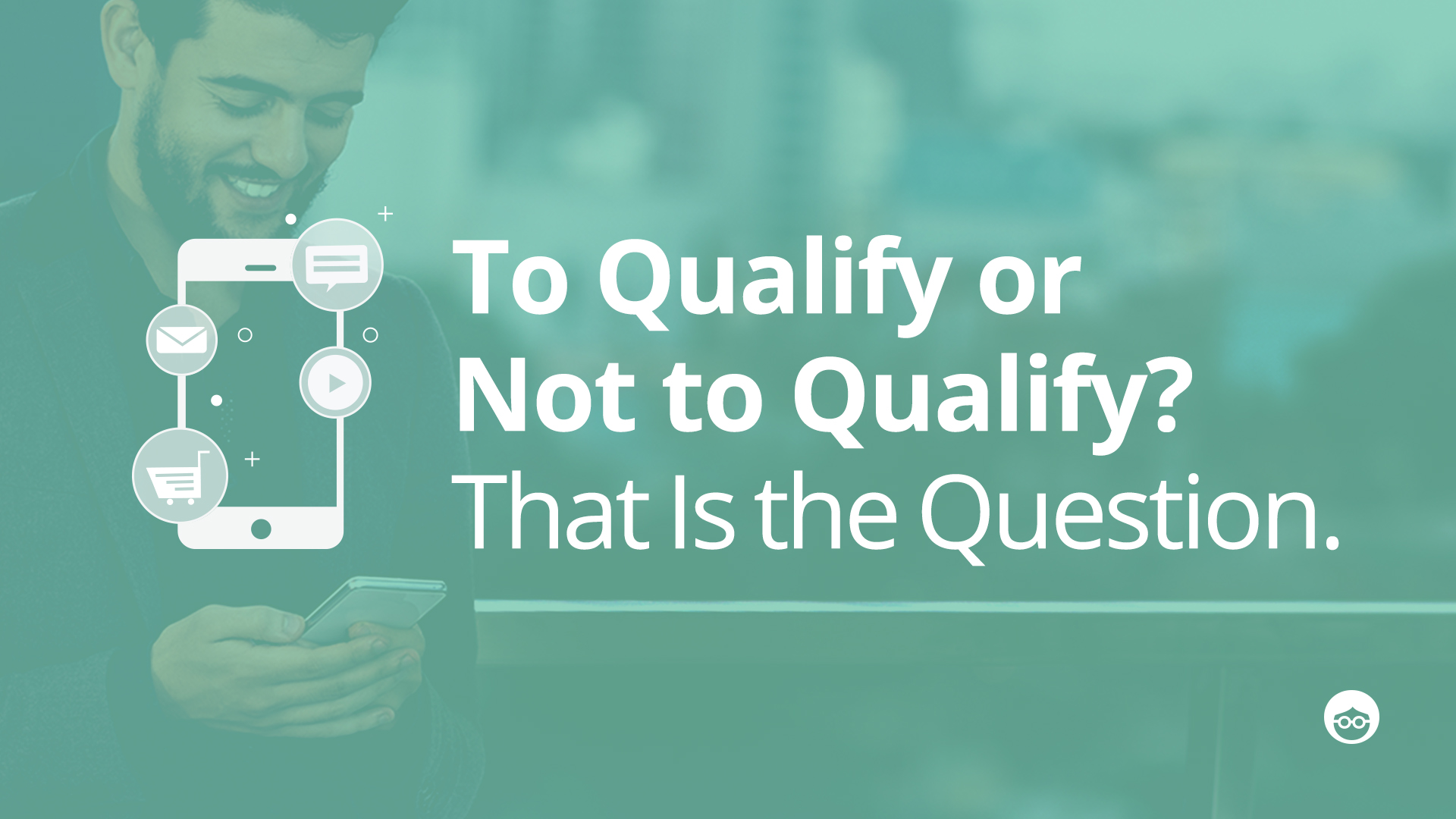
If you are struggling with allocating the appropriate time and resources when qualifying leads – you are not alone.
According to Hubspot’s State of Inbound 2018 Report, 17% of salespeople struggle with qualifying leads. Having an efficient lead qualification process is key to work efficiently and avoid wasting time.
Here are a few tips that should help you qualify inbound leads:
- Email Alias
- Website Quality
- Company Size
- Social Media Presence & Following
- Press & News Coverage
But also something important…
Before you even consider qualifying your first lead, you need to determine what “qualified” means. The way to do this is by creating a profile of your perfect lead. Use this profile as a benchmark when considering each lead. Then you can make a decision as to how they qualify.
Here’s an example:
- Job title
- Industry
- Location
- Number of employees
- Annual revenue
- Pain points
Write down as much information as you can to define your perfect lead. Defining your qualification criteria will make for a smoother qualification process.
Okay, now you’re ready.
Now that you have an ideal client persona, you are ready to start qualifying. Here are a few basic pointers that can help you decide whether a lead is qualified or not:
1. Email Alias
One of the simplest and quickest ways to identify lead potential: It is not always the case but there’s a good chance that if the alias is @companyname.com, rather than @gmail.com, the prospect is more likely to be from an established company.
☝Disclaimer: Take this with a grain of salt. After all, they could be using their personal email address!
2. Website Quality
Assessing the quality of your lead’s website can be a tough call because it’s subjective. While one person might rate a website’s quality high, another might not – but generally speaking, the website overall should have good content, and provide a reasonably effective user experience.
A few things to check for:
- No broken links
- Image quality
- Multiple pages (not just a standard template homepage)
Apart from your own sense of the website’s quality level, there are tools that help you uncover the technologies of websites and their web traffic stats, like BuiltWith, Datanyze, and SimilarWeb.
3. Company Size
Pretty obvious, right? Just another quick way to get an idea of who you’re dealing with.
The company size, which is such a basic piece of information, will help you decide whether the lead matches your ideal client persona. Spend a few minutes checking how many employees a company has just by Googling them or looking them up on Linkedin.
4. Linkedin
While we’re on the subject of LinkedIn, there’s no better tool to find out exactly who the lead is. Their job title, duties, and responsibilities, even their past work experience can help you better understand how best to communicate with them.
For example, was it the CEO who reached out to you, or the Marketing Director? Knowing who exactly the lead is can help you craft a more suitable message. You always want to make sure that the person you are talking to is the best point of contact at the company. If they are not, that may be ok – but be aware of it, so you can perhaps ask for an introduction later on.
5. Social Media Presence & Following
Social media has become extremely important for every business. Everyone is looking to expand their following and increase engagement online. Not having a social media presence, or lack of following on social media might be a red flag. It could potentially mean the company is not well known or established.
Spend some time on your lead’s social media pages – it’s a great indicator of how popular, active or well known their company may be.
6. Press & News Coverage
If there is media buzz surrounding the company, or if it has been featured on a leading publisher, this is a great sign!
Companies that get tons of press are likely to have a lot of potential – see if you find any! An easy and fast way to do this is simply by searching the company in the News tab on Google.
Lead qualification is all about research:
- There’s so much information you can find online.
- The more information you have, the easier it is to qualify a lead.
- Find the right balance with taking your time, and not wasting your time.
- Prioritize leads that look promising. Avoid wasting time on leads that show no potential and are not a good fit.
- Always look for new ways to improve your process and work more efficiently.
Lastly, there’s no such thing as a perfect lead qualification process. Having checklists is a must, but it’s really important to follow your instincts too. Put a solid lead qualification process in place, but don’t be afraid to go with your gut feeling at times.
It may just be the key to finding your best leads!